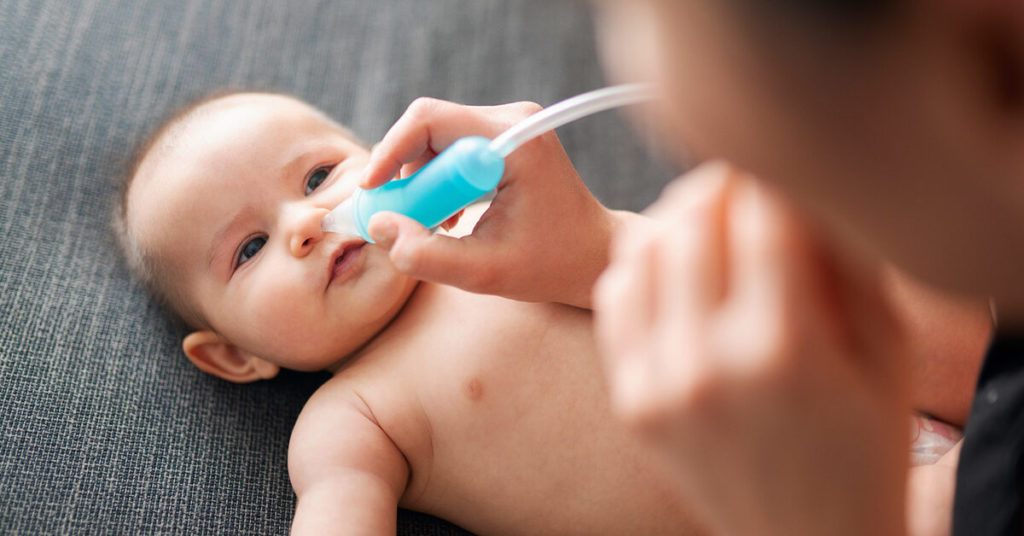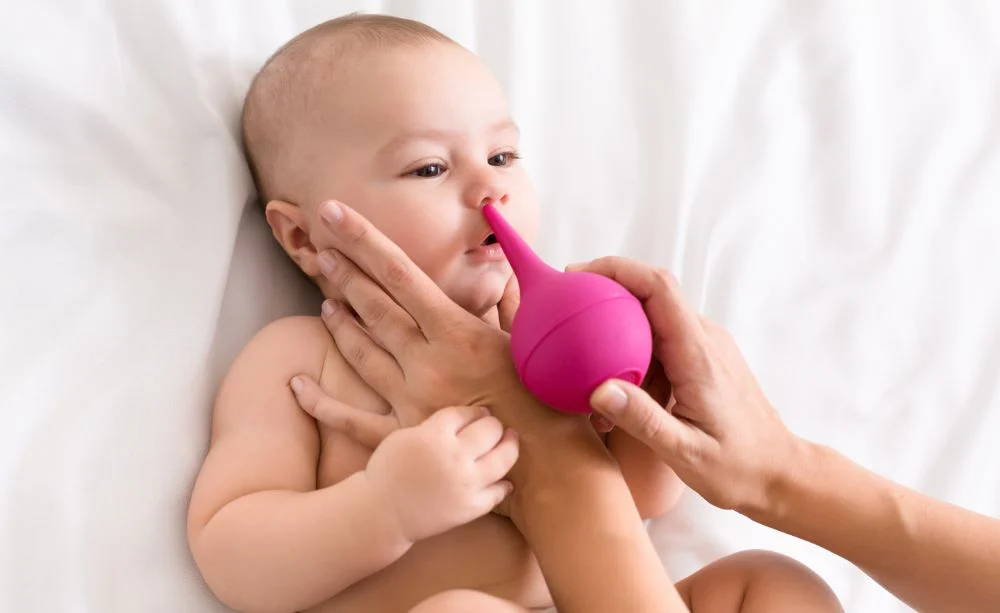We’re going to know everything about how to clean baby nose? In detail through this digital report from Bekoka press.
Babies frequently have stuffy, crowded noses. This results in smeared mucus around their noses as well as mucus locked from within their nostrils, which might also require removal. Are using a damp cotton ball to delete mucus from your baby’s nose. Have used a bulb syringe or a human vacuum nose air pump to tidy the nose.
how to clean baby nose
You understand what to do if you have a stuffy or running nose, totally correct? Nevertheless, young babies, particularly newborns, have not yet mastered the skill of blasting their noses. What should you do if you assume your baby has a cold or a few boogies that are trying to block their airflow as well as contribute to congestion?
Given the numerous options for having to clean your baby’s nose in the industry, it’s comprehensible if you’re feeling a little overloaded in your search for the best remedy. A bulb syringe, nasal aspirator, as well as saline drops but also sprays are the most prevalent options. So, let’s go over when and how to employ each of these common ones.
Look here, Pregnancy Calculator
Various Methods for Cleaning Your Baby’s Nose
Trying to make the baby sneeze is an organic method for cleaning his nasal cavity. This clears the blockage but also eliminates extra mucus in the nose. If the newborn has still been bothered by this biological cycle, a nasal wash is preferable.
Aspirator for the nose
Nasal aspirators have increased in popularity in recent years, as so many parents believe they are more effective and user-friendly than conventional bulb syringes. With this method, you will generate suction power with your mouth rather than your side, similar to using a bulb syringe.
An aspirator generally includes a mouthpiece as well as tubing that connect to a syringe-like tube with a narrowed open tip. These aspirators generally come with expendable filtration, so you don’t have to worry about suctioning too hard and getting mucus in your mouth.
Merely put the tip of the angular tube against by the having opened of your baby’s nose while holding the mouthpiece in your mouth. It’s crucial to remember that you don’t put it on the inside, simply against the nostril to create a seal. Suck in air through the tube to create partial vacuum. Nevertheless, don’t suck too difficult, as you may aggravate their nose if you are too aggressive.
Look here; Bekoka Diapers For Seniors
Nasal spray
For infants, babies, and toddlers, the safest approach is to use a saline nasal spray. The application is straightforward. Simply lay the baby down, cautiously tilt the face back, as well as squeeze two or three drops of saline nasal spray through each nostril. This would clear the nose and reduce traffic.
Other treatments
Most people seem to believe they can’t stop having to clean their baby’s nose. Other treatments, in contrast hand, could indeed help reduce overcrowding or a runny nose.
How Do You Prepare Nasal Saline for Babies?
Mucus can be exceptionally thick. It is possible to trimmed with the saltwater solution to facilitate removal easier. Suctioning, in contrast hand, should never be completed more than 4 times per day (2). Preparatory technique:
- In a cup of boiling water, combine one-fourth teaspoon salt.
- Allow it to reach room temperature. Keep it in a spotless, encased bottle.
- After three days, classify the flask with the date of order to prepare and discard it.
How Do You Clean a Baby’s Nose with Saline Drops?
Place your baby on a terry towel with his or her head slowly tilted upward.
Using a dropper, place two or three drops of salt water into the baby’s nose. Pause between 30 and 60 seconds.
When should you see a doctor?

So, is a regular fusty nose something a little more severe that necessitates an appointment with the doctor? If your baby’s overcrowding does not improve after a few days of trying home remedies, it’s moment to see a doctor.
Take your baby to the nearest hospital emergency room if they exhibit severe indications of difficulty breathing, like wheezing, flared nostrils, trying to pull in at the ribs, or respiration too difficult or fast to feed.
How Do You Tidy a Baby’s Nose with A Rubber Bulb Syringe?
Place the baby in a seated position. Try squeezing the air out of the rubber bulb while keeping it pinched.
Insert the syringe tip into the nasal cavity without going too deep. Allow the mucus to drain by releasing the bulb stress.
How Do You Clean a Baby’s Nose with A Nasal Aspirator?
A nasal aspirator is made up of a nozzle, a long part of soft pipework, as well as a mouthpiece. These 3 are linked by the tube in the centre. The procedure is similar to that for a bulb syringe, with the exception that the mouthpiece is used for suction. When tried to compare to the bulb syringe, a few family believes the nasal aspirator becomes less invasive, extra effective, as well as easier to use.
What is cause?

Stuffy and runny noses in newborns are frequently caused by the same causes of fusty noses in adults and older kids. The following are the most frequent causes of congestion in babies:
- air pollution
- air that is dry
- nasal passages are tiny
How to Use a Nasal Aspirator or a Rubber Bulb Syringe?
- Assertive suction tube could cause inflammation or bleeding in the nasal tissues, exacerbating the overcrowding.
- Suction tube the baby’s nose or more multiple times or three times per day damages and irritates its lining. So stay away from it.
- Before you begin, extensively clean your hands. If you can’t wash your hands, at the very least are using an alcohol-based sanitizer.
- Squeeze no and over two or three drops of remedy into the baby’s nostrils.
- Do not be concerned if the baby sneezes some workaround. Because it will get into your nostril.
- To avoid drying out the nose and making it runny, do not use saline drops for more than four days in a row.
In closing
We knew everything about how to clean baby nose? In detail through these previous points, and we hope you like it too much buddy.
References


